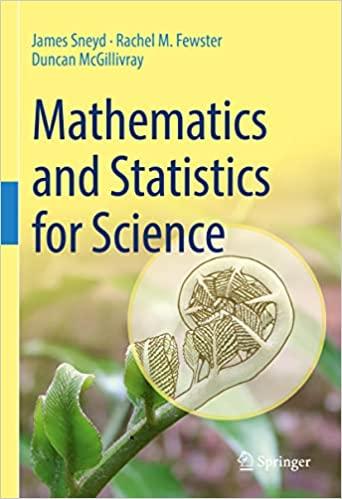In this question well investigate some simple population models with periodic birth and death rates. Lets begin
Question:
In this question we’ll investigate some simple population models with periodic birth and death rates. Let’s begin with a typical population modelled with both birth and death. If N is the number in the population (measured in millions, say), then a typical model would be dN dt
= rN − aN2
, where r is the birth rate and a is the death rate. Just to be specific, we’re going to set r = 1 year−1 and a = 0.1 million−1 year−1
.
a. Solve the equation using the Euler method using ∆t = 0.1 years and with N(0) = 20. Solve up to t = 20 years. What does the solution do as t → ∞?
b. What about if you use the initial condition N(0) = 2. What does the solution do as t → ∞? Does this make biological sense?
c. Now make the birth and death rates periodic functions of time. Let dN dt = (1 + sin(t))N − (0.1 + 0.02 sin(t))N 2 , and solve again. How does your solution differ from that obtained in part a?
d. Now make the death rate vary a bit more. Let dN dt = (1 + sin(t))N − (0.1 + 0.09 sin(t))N 2 and solve again.
e. Finally, make the death rate slightly out of phase with the birth rate (for example, the death rate will tend to be higher in winter while the birth rate will tend to be higher in spring). Let dN dt = (1 + sin(t))N − (0.1 + 0.02 sin(t − 2))N 2 and solve again. How does your solution differ from the previous cases?
These are all just arbitrary changes, not only to give you practice at using the computer, but also to make it clear that the behaviour of models like this is not easy to predict. Could you have predicted the last two parts of the question? Unlikely. The authors of this book certainly couldn’t have.
Step by Step Answer:

Mathematics And Statistics For Science
ISBN: 9783031053177
1st Edition
Authors: James Sneyd, Rachel M. Fewster, Duncan McGillivray






